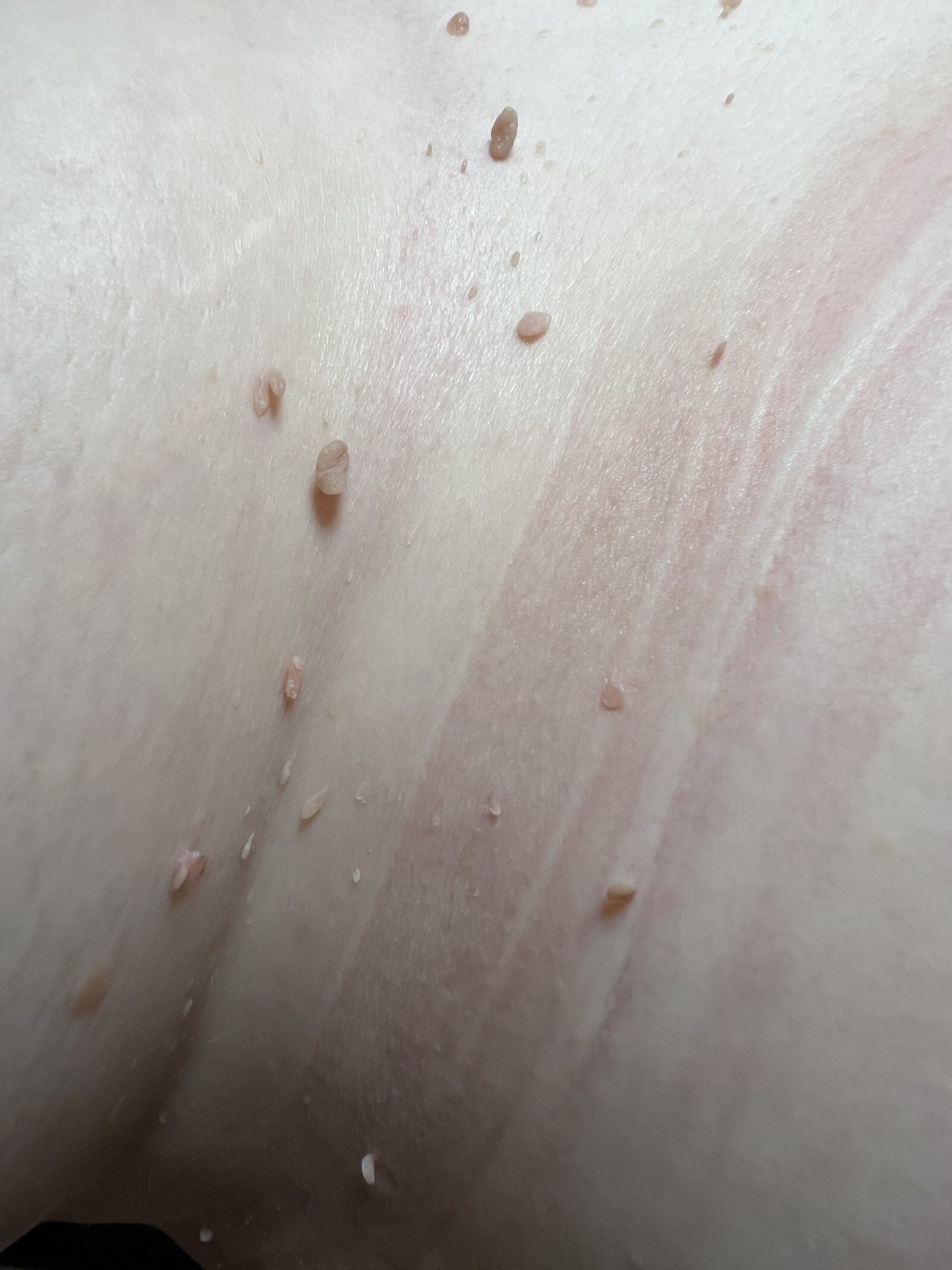What Causes Skin Tags and What Are They Made Of?
Skin tags are small, soft growths of skin that often appear on areas of the body where skin rubs against skin or clothing, such as the neck, armpits, eyelids, or groin. Though they may seem concerning at first, skin tags are typically harmless and painless. But what exactly causes these growths, and what are they made of?
What Are Skin Tags Made Of?
Skin tags, also known as acrochordons, are composed primarily of collagen fibers, blood vessels, and skin cells. The core structure consists of tightly packed collagen, a protein that provides strength and elasticity to the skin. Surrounding this is a layer of blood vessels that supply nutrients to the tissue. Skin tags are usually covered by a thin layer of skin, which makes them feel soft and flexible to the touch, we often find ourselves playing with them and then this can make them sore.
They typically range in size from a few millimeters to over a centimeter in diameter, and may hang off the skin by a small stalk, known as a peduncle. While they can appear anywhere, skin tags are most common in areas where skin folds or experiences friction.
What Causes Skin Tags?
Several factors have been identified as potential contributors:
- Friction and Skin Rubbing: Skin tags are more likely to develop in areas where skin rubs against skin or clothing, such as the armpits, neck, or groin. Constant friction can cause skin cells to grow rapidly, leading to the formation of a skin tag. In males I often see them arround the neck where a collar is worn and women under the armpits and/or breasts.
- Genetics: There is a hereditary component to skin tags. If your family members have them, you may be more prone to developing them as well.
- Hormonal Changes: Pregnancy or conditions like diabetes, which cause hormonal changes or insulin resistance, can increase the likelihood of developing skin tags.
- Aging: Skin tags are more common as we age. As the skin becomes less elastic, it’s more prone to forming growths like tags.
While skin tags are usually benign, if you notice any changes in their size, shape, or color, it’s always a good idea to see your doctor first to get them checked and also rule out any medical reason why you might be getting them.
To book your blemish consultation now in either my Colchester or Chelmsford clinic click here.

